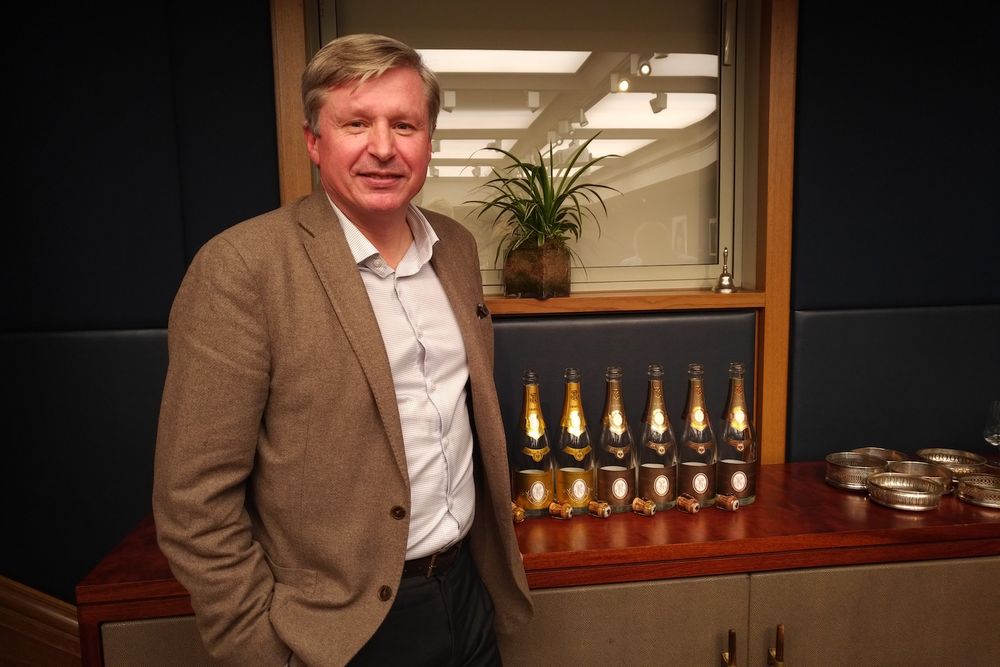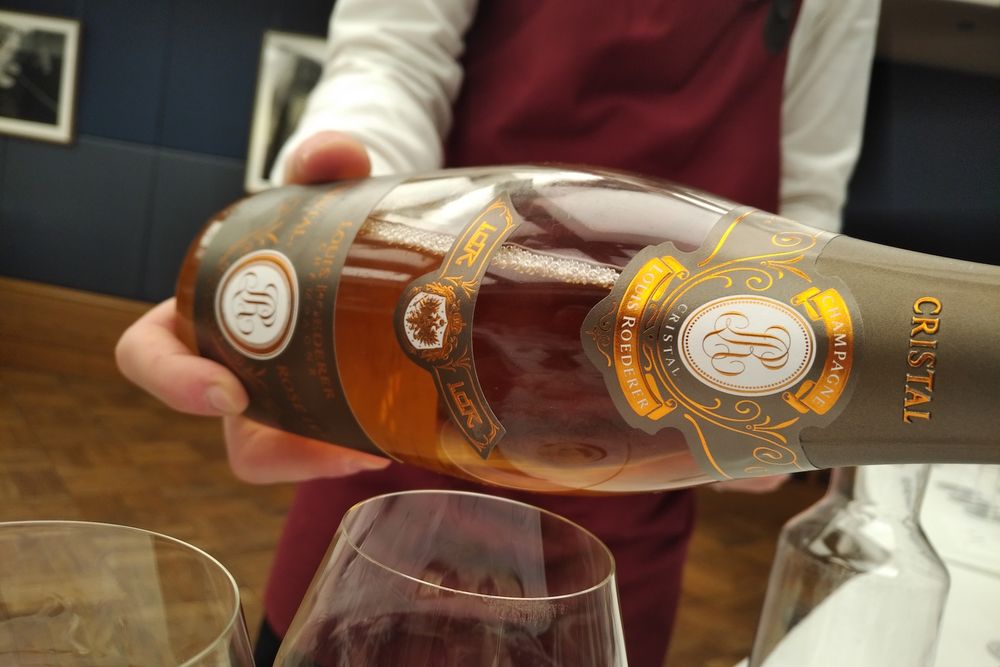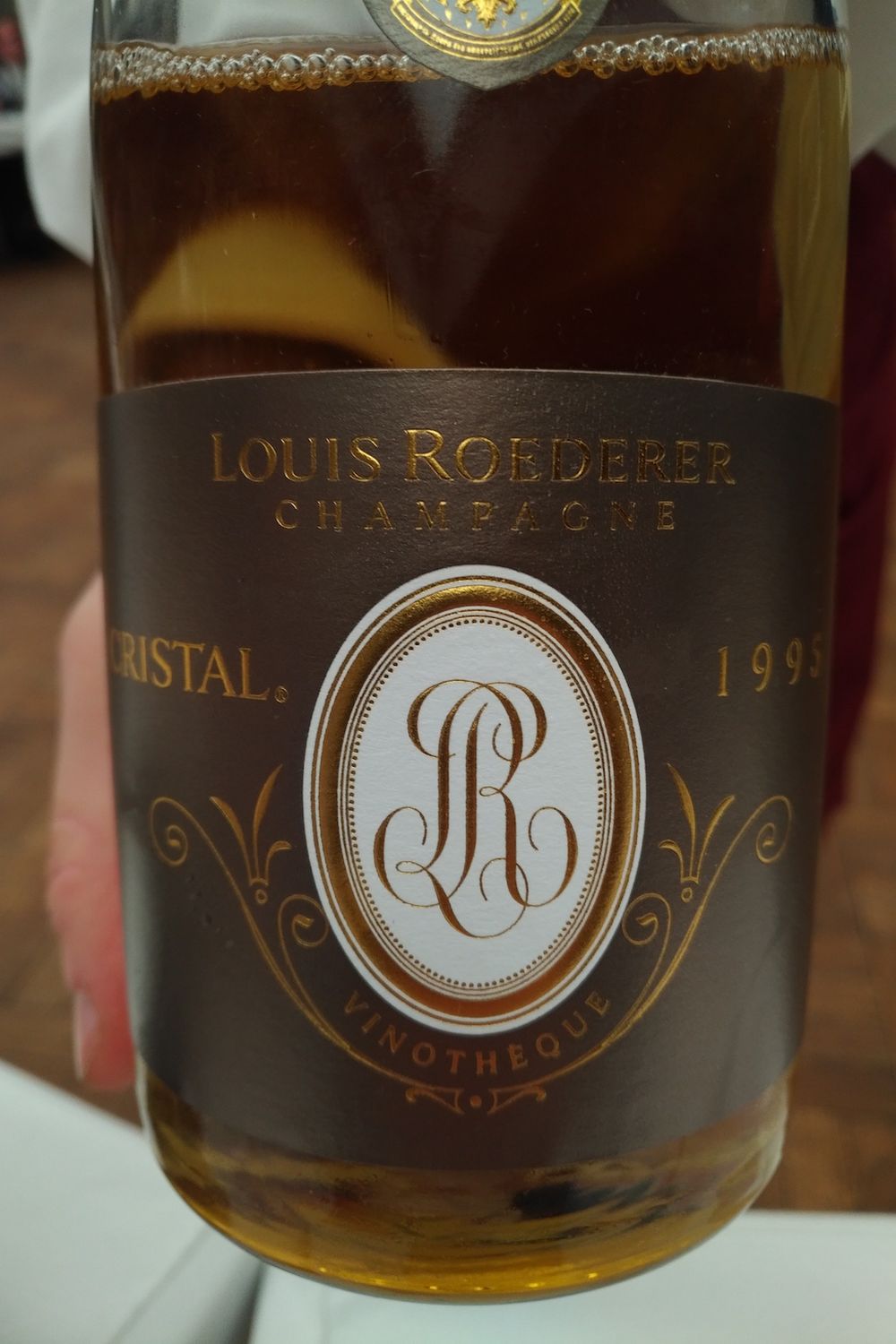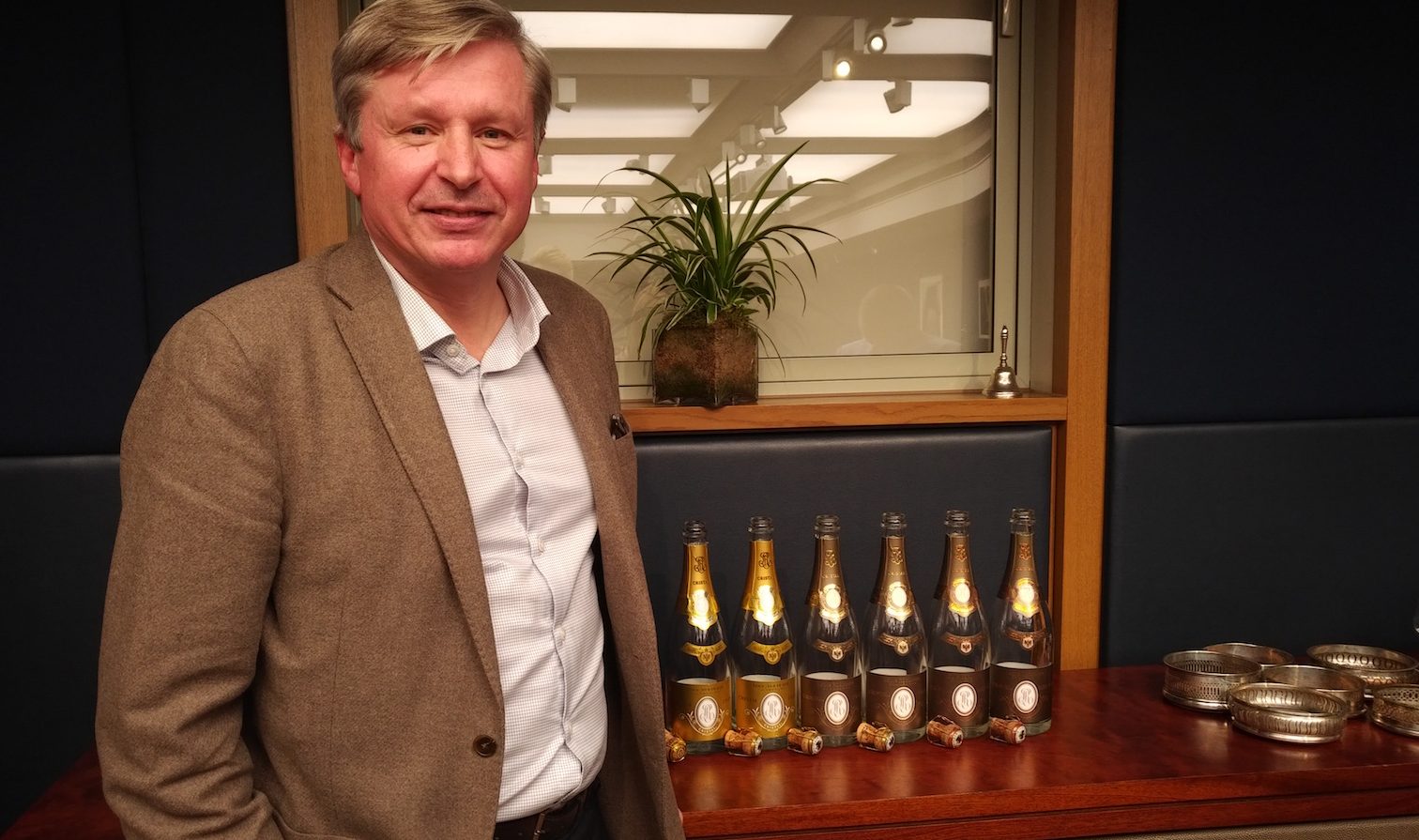Cristal Vinothèque 1996, a vintage known for its strident acidity, had ten years sur lattes, four years sur pointe and seven years of post-disgorgement ageing.
For the first time ever, Champagne Louis Roederer’s Cristal Vinothèque was shown in the UK. Jean Baptiste Lécaillon, Roederer’s perfectionist chef de cave, presented six wines, each a vivid example of what he calls the “Cristal DNA”.
If the tasting ostensibly marked the launch of Cristal Vinothèque 1996, it was an insight into Lécaillon’s visionary interpretation of what Champagne can be –with Cristal its culmination– and Roederer’s unfailing commitment to absolute quality. Of course, it also was a sheer delight: we tasted Cristal 2008, Cristal 2002, Cristal Vinothèque 1995, Cristal Vinothèque 1996, Cristal Vinothèque Rosé 1995 and Cristal Vinothèque Rosé 1996. Each with their distinct Cristal personality.

“There has always been a window for Cristal at 20 years of age,” Lécaillon said, which he wanted to make available in a special bottling. He started experimenting in 1993 and produced just 400 bottles of the Cristal Vinothèque 1995 and 500 of the Cristal Vinothèque 1996 (and even less of the rosé). “I could play with a small quantity,” he said of this cautious start. At the centre of this “new chapter for Cristal” was the endeavour to “go beyond Cristal but stay very much the same; to make a wine that was as bright as possible, as fresh as possible, as delicate as possible.”
So what is the Cristal DNA? Why has 1996 such a special place in Lécaillon’s heart?
It is its comparability to 2008 of which Lécaillon said that “if there is an archetype of Cristal, it is 2008.”
At its London launch earlier this year, Lécaillon went as far as saying it was his favourite vintage of Cristal. Today he said that “I made this wine [Cristal 2008] remembering 1996 every day. 2008 was so close to 1996 that it was a unique possibility to play the same game,” while also putting in practice what had been learned in 1996. That vintage, Lécaillon reckons, was the last one where picking decisions were solely made on analytics. Today they are made on taste. 2008 was thus harvested a week later, some parcels underwent malo-lactic fermentation “for extra roundness” and stayed on its lees for almost a decade.
“When I say that this [2008] is the most Cristal of Cristals it is because I get the salinity, the chalkiness. Of course it is very young but it is very much what we aim for.”

Jean Baptiste Lécaillon, Roederer’s perfectionist chef de cave, London, November 19, 2018
So how to achieve that kind of freshness and density with more age?
“We played with the time on lees,” Lécaillon said and revealed that the in-house working title for the Vinothèque series was “Project Eternal Youth.” He explained that the Cristal Vinothèque 1995 spent eight years sur lattes, i.e. horizontally for maximum interaction between lees and wine for “texture and aroma”. The bottles were then riddled to move the lees into the bottle neck and aged for a further six years sur pointe, i.e. the inverted bottles age vertically to minimise the contact between lees and wine for “reduction and freshness”.
Lécaillon emphasised that ageing sur lattes is by no means a purely reductive state, rather a mixed state of reduction from the lees while oxygen enters. Ageing sur pointe is more reductive and preserves freshness. After that time of ageing horizontally and vertically, the bottles were disgorged and had a further seven to eight years of post-disgorgement ageing for softness of mousse, or “caress” as Lécaillon likes to call it.
All the Cristals are assemblages of Pinot Noir and Chardonnay, all these here have a dosage of around 7g/l.
Cristal Vinothèque 1996, a vintage known for its strident acidity, had ten years sur lattes, four years sur pointe and seven years of post-disgorgement ageing. Of course there is more than just an unusual and prolonged ageing regime to these wines. Every single aspect of production comes under scrutiny. Lécaillon touched on organics and biodynamics, fruit ripeness, clonal selection, vineyard parcels, yeast populations, first and second fermentation, bottle pressure and more.

Making the rosé version of Cristal Vinothèque has another unusual twist. There are only four parcels from which this wine, made for the first time in 1974, is sourced: two parcels of Pinot Noir in Aÿ, one Chardonnay parcel in Mesnil and one in Avize. The Pinot Noir gets a cold soak of 10 days, the wine is racked, the free-run juice is taken and some Chardonnay juice is added. Spontaneous co-fermentation starts and the wine which is neither a saignée nor your usual rosé d’assemblage becomes a pale, slightly copper-inflected rosé. The ten-day cold soak which Lécaillon calls “a true infusion” is the wine’s only chance to pick up some colour. The results are striking.
Clearly Lécaillon has cracked the secret of eternal youth for his wines. It seems nothing short of alchemy but in fact it is endless curiosity, both physical and philosophical, paired with detachment from preconceived ideas and the courage to try what hasn’t been done before. It is a profound engagement with every aspect of wine growing and winemaking aligned with patience, dedication and absolute precision. Words and tasting notes cannot really do justice to these wines which, quite simply, are monuments to Champagne.
Cristal 2002 (a re-release of the original disgorgement from 2009 aged in a 12m-deep, dark, cold cellar): Gold colour. Creamy chalk on the nose has the richness of lemon-flecked, cold, sweet, fresh butter. On the palate the serene lemon notes remain while the butter has some of the caramelised notions of bubbling beurre noisette. Waves of ripe, mellow apple start opening up. But beyond the flavours there is a sense of absolute balance and poise.

Cristal Vinothèque 1995: Bright gold colour. The nose is a complex mix of smoke, fir honey and stony saltiness recalling wet oyster shell. With air it attains the resiny savouriness of maple syrup, followed by a lemon breeze. The palate comes in with unexpected ripe lemon chalkiness from which thousands of the finest, tiniest, breeziest bubbles radiate. They disperse a joyous Mirabelle plum ripeness while upholding that Amalfi lemon purity to the very end. A delicious, mind-boggling combination of maturity and utter, unaffected freshness.
Cristal Vinothèque 1996: Golden colour. The very first whiff is heady with crushed citrus foliage. The headiness continues with an almost otherworldly notion of salt-encrusted candied lemon peel. The palate embodies super-slender, super-salty poise. The 1996 acid was tamed and sublimated into slenderness and cool, fragrant serenity. Its pervasive thrill is exciting and calming at once. Majestic, straight-laced, honest, steely and therefore utterly disarming.
Cristal Vinothèque Rosé 1995: Pale rose gold colour. Pure, ripe citrus zest on the nose mixes with notes of ripe, red apple and a hint of chamomile. There is a profound notion of apple freshness. Lifted creaminess on the palate continues that almost playful freshness but adds an edge of bitter almond and red apple peel with its tiny, smooth bubbles. This is barely contained in its youthful freshness.
Cristal Vinothèque Rosé 1996: Rose gold with copper inflections. On the nose the first hint is of ripe red apple but then a far more insistent note of juicy, ripe mandarine peel follows. The palate is almost boisterous; it is like a genie let out of the bottle, swirling with a pure and joyous life force. This is both urgent and fine, vivid and triumphant, heady with citrus that leaves a dangerously aromatic streak of the freshest, most vivid, ripe tangerine. Whoa! It will take years before this shows as much as a crease, let alone a wrinkle.
































